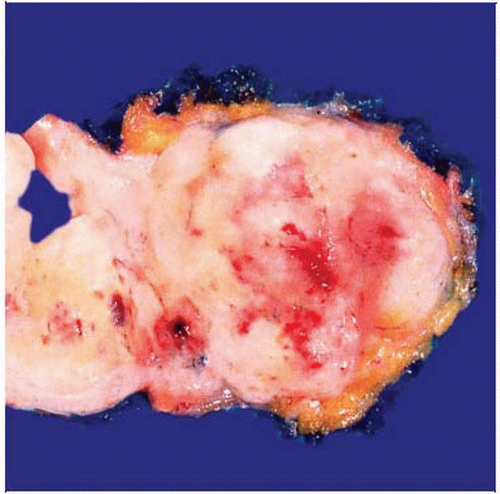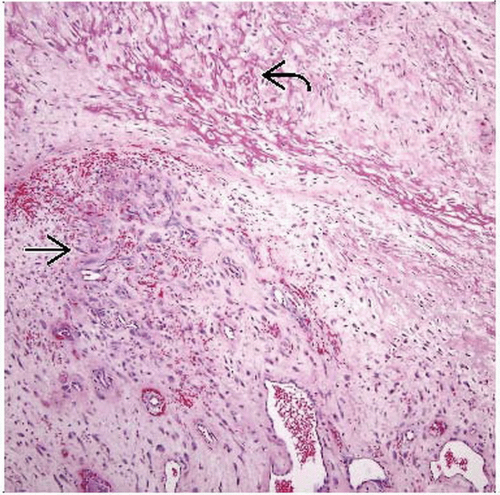Ischemic Fasciitis
Elizabeth A. Montgomery, MD
Key Facts
Terminology
Pseudosarcomatous proliferation
Clinical Issues
Mean age: 8th decade
Most cases do not recur following excision
Microscopic Pathology
Most involve deep subcutis
Epidermal ulceration typically absent
Zones of fibrinoid necrosis and prominent myxoid stroma
Necrotic zones rimmed by ingrowing, ectatic, thin-walled vascular channels
Atypical enlarged degenerated fibroblasts with abundant basophilic cytoplasm, large hyperchromatic smudged nuclei, and prominent nucleoli
 Gross photograph of ischemic fasciitis shows subcutaneous fat with hemorrhage, whitish fibrous tissue, and zonal necrosis. |
TERMINOLOGY
Synonyms
Atypical decubital fibroplasia
Definitions
Pseudosarcomatous proliferation composed of zones of fat and fibrinoid necrosis with ingrowth of capillaries, reactive fibroblasts, and myofibroblasts
Initially described as tumefactive pressure sore arising over bony prominences in debilitated patients
May also arise in other locations in nondebilitated persons
CLINICAL ISSUES
Epidemiology
Incidence
Rare
Age
Mean: 8th decade
Occasionally in younger adult patients
Gender
No predominance
Site
Usually around limb girdles and sacral region
Presentation
Painless soft tissue mass
Stay updated, free articles. Join our Telegram channel

Full access? Get Clinical Tree





